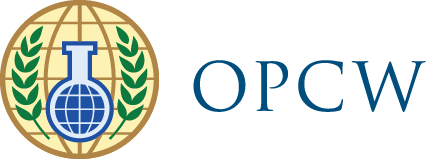THE HAGUE – The agency responsible for implementing the international Chemical Weapons Convention has reported that steady progress is being made to eliminate global stockpiles of chemical weapons and the means to produce them, but warned that a dozen countries must still join the treaty — including five in the Middle East — before universal compliance can be assured.
The report was issued today by the Organisation for the Prohibition of Chemical Weapons (OPCW) on the eve of a major review conference that begins in The Hague on Monday, 7 April 2008.
“The Chemical Weapons Convention is the only international treaty that aims to eliminate an entire category of weapons of mass destruction, and it is succeeding,” said the OPCW Director-General, Ambassador Rogelio Pfirter. “At a time when the credibility of the multilateral system in this area has been questioned we have demonstrated that global disarmament under strict international verification is possible. However, the Convention is only as strong as its weakest link, and securing universal adherence remains our most important and difficult challenge.”
Director-General Pfirter added that several of the remaining 12 countries that have not ratified the Convention may join in the near future, including at least one from the Middle East.
The Convention was signed at an international ceremony in Paris in January 1993 and took effect four years later. Among the main achievements cited by the OPCW report:
• 183 countries have now ratified the Convention representing about 98% of the world’s population and chemical industry, making OPCW the fastest growing UN disarmament treaty organisation in history.
• Of the 65 chemical weapons productions facilities declared under the Convention by 12 States Parties2, 100% have been de-activated and 61 of them either completely destroyed or converted to peaceful uses.
• Of the more than 70,000 metric tonnes of chemical agents declared by six States Parties3, more than 37% have been verifiably destroyed with remaining stocks scheduled for destruction by 2012.
• Of the 8.6 million chemical munitions and containers covered by the Convention, 100% have been inventoried and verified, and one third destroyed.
• More than 3,000 inspections have taken place since 1997 at more than 1,000 chemical weapons-related and industrial sites on the territory of 80 States Parties to verify compliance with the Convention.
The completion of chemical weapons disarmament within the Convention’s timelines is at the core of the current phase of implementation. On 11 July 2007, Albania became the first of six States Parties to completely destroy its declared chemical weapons stockpile. The other five have all complied in a timely fashion with their intermediate destruction deadlines.
The Russian Federation has destroyed nearly a quarter of its declared stockpiles and expressed confidence it will achieve destruction of 45% by 2009. For its part, the United States of America has already destroyed half of its declared stockpile and is ahead of its second intermediate deadline. Another State Party is expected to complete destruction of its stockpiles in 2008, India by April 2009, and the Libyan Arab Jamahiriya by 2011.
Chemicals weapons were a scourge of 20th century warfare, beginning in World War I when they killed over 90,000 soldiers and injured 1 million. Under Saddam Hussein, Iraq deployed chemical weapons on a massive scale against Iranian forces and Iraqi Kurds during the 1980s, killing and maiming tens of thousands. In 1994-1995 the Aum Shinrikyo doomsday cult staged terrorist attacks with sarin nerve agent in Japan that killed 19 and injured more than 6,000 others.
1. There are five Signatory States that have yet to ratify the Convention (Bahamas, Dominican Republic, Guinea-Bissau, Israel, Myanmar), and seven non-Signatory States (Angola, Democratic People’s Republic of Korea, Egypt, Iraq, Lebanon, Somalia, Syrian Arab Republic).
2. The 12 States Parties that have declared chemical weapons production facilities are Bosnia and Herzegovina, China, France, India, the Islamic Republic of Iran, Japan, Libyan Arab Jamahiriya, Russian Federation, Serbia, United Kingdom, United States, and another State Party.
3. The six States Parties that have declared chemical weapons stocks are Albania, India, Libyan Arab Jamahirya, the Russian Federation, United States, and another State Party.
